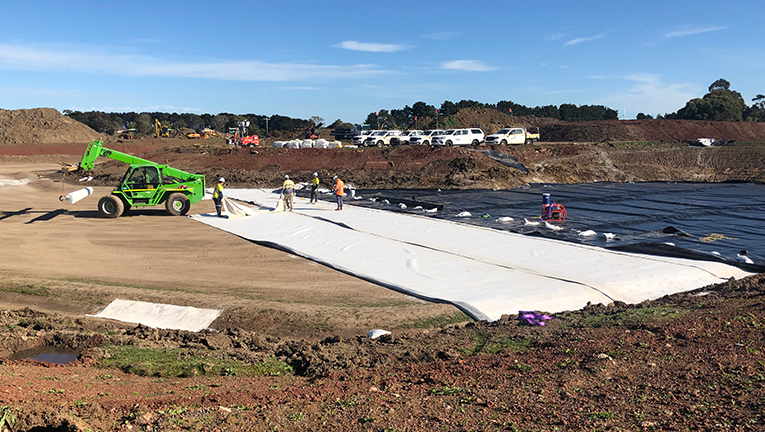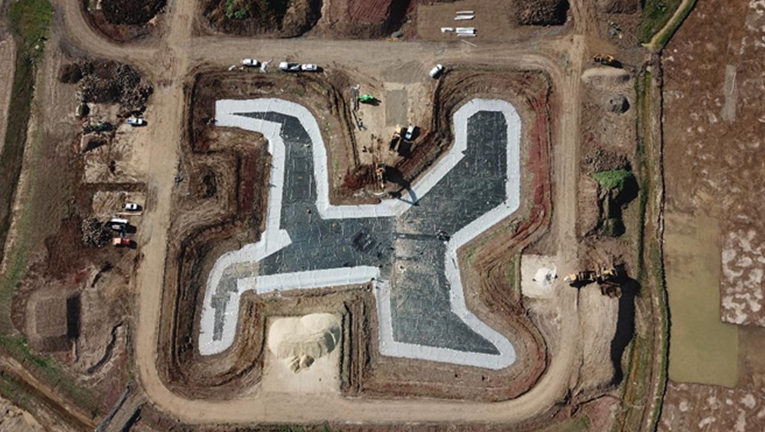
The installation of a complex and multilayered lining system in the base of a dam at Fiskville, Victoria was completed this month, and represents a significant milestone for this large rehabilitation project being delivered by Ventia's Environmental Services team.
This is the first stage in constructing the base and cap lining system that will be used to encapsulate the PFAS impacted soil at the site.
Installation of the 5,000m2 basal liner system is an additional control to capture and manage water should this occur within the in-situ soil management area.
To date, the team has excavated approximately 68,000m3 and the onsite water treatment plant has treated more than 14 million litres.

Read more about the work Ventia is delivering on this project:
More about the basal liner system:
The basal liner system is comprised of layers of geosynthetic clay liner (GCL), high density polyethylene (HDPE), protection geotextile, drainage aggregate and filter geotextile - geotextiles are permeable fabrics used with soil. The GCL acts as the primary seal which is then reinforced by the HDPE, while the geotextile acts as a cushion to protect the liner during bulk filling operations. The GCL is laid in panels that are then glued together with bentonite paste to form a seal. The HDPE is then laid on top of the GCL and the panel's fusion and extrusion welded together. The protection geotextile is then laid on top of the HDPE and the panels are heat bonded. Together these three items form a cohesive and very low permeability geomembrane system. Finally, aggregate and a filter geotextile are placed on top of this system which all together comprises the base internal drainage sump (IDS). The IDS, coupled with the internal drainage lines, will collect any water that permeates through the cap liner once the entire cell is constructed. A riser pipe will be progressively installed as the cell is constructed which will allow this impacted water to then be extracted and taken offsite for treatment. |